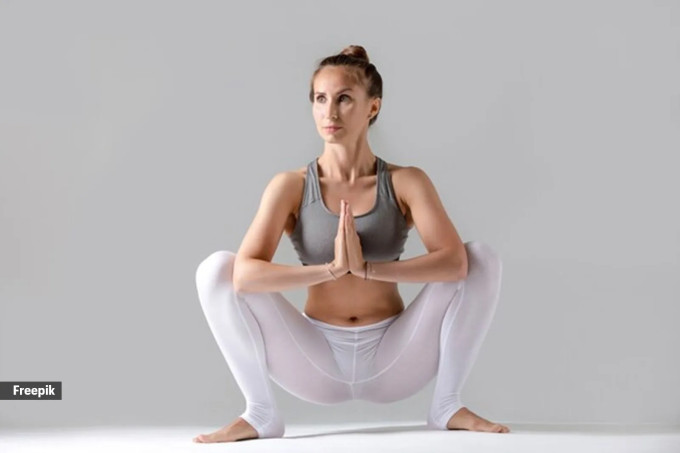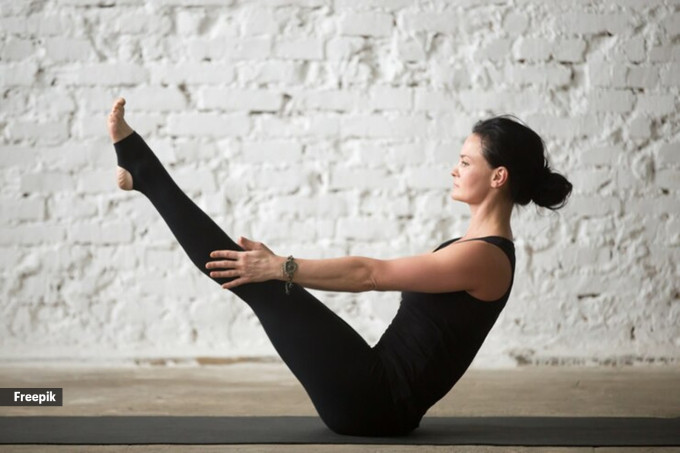Women, add these 5 yoga asanas to your daily routine
Women often forget to take care of their health and well-being, having to devote their time to their kids, jobs, house chores and what not. In such a scenario, yoga offers a sanctuary for women seeking holistic wellness. The ancient practice not only enhances physical flexibility but also nurtures mental and emotional resilience.
Through an Instagram post, celebrity yoga and holistic wellness expert, Anshuka Parwani, shared 5 yoga asanas women can practice daily. “We women are always on the go and great multi-taskers, but in the process, we tend to ignore our health and well-being,” Parwani captioned the post. “These asanas are beginner-friendly, will work on your entire body, and leave you feeling refreshed and energized,” she added.

1. Baddhakonasana
Also known as Bound Angle Pose or Cobbler’s Pose, Baddhakonasana is a seated yoga asana often used to open the hips and groin. According to Manushreya Sharma, a certified yoga instructor, this pose helps regulate bowel movement, stretches the knees, and stimulates circulation in the legs. “It also removes fatigue from long hours of standing and walking as well as offers relief from menstrual discomfort and menopause symptoms,” she said.
However, if you are suffering from a groin or knee injury, Sharma advises individuals to keep a blanket under the outer thighs for support. Additionally, sciatic patients should either completely avoid the pose or sit on a cushion to raise the hips.
Steps:
- Begin by sitting on your yoga mat with your legs extended straight in front of you.
- Bend your knees and bring the soles of your feet together, allowing your knees to drop out to the sides. Your feet should be close to your pelvis.
- Hold your feet with your hands. You can loop your hands around your feet and clasp your fingers, creating a bind.
- Sit up tall and lengthen your spine. Avoid rounding your back; instead, try to keep a straight and upright posture.
- Gently press your knees toward the floor, using your elbows to encourage a gentle opening in the hips. Avoid forcing the knees down; allow the stretch to happen gradually.
- Take slow and deep breaths, allowing the hips to open with each exhale. Focus on maintaining a relaxed and steady breath throughout the pose.
2. Malasana
 Malasana. (Source: Freepik)
Malasana. (Source: Freepik)
Malasana, also known as Garland Pose, involves squatting down on the floor. “Malasana engages and strengthens various muscles, including quadriceps, hamstrings, and the lower back and core muscles. It is good for the digestive system as it compresses the abdominal area, helping eliminate digestive issues and bloating,” Sharma said.
However, individuals with lower back, hip, foot, or ankle injuries should refrain from performing this asana.
Steps:
- Begin by standing with your feet width apart on the mat.
- Turn your toes slightly outward. This foot position will make it easier to squat deeply.
- Inhale and bend the knees and lower your butt to come into the squat position.
- While squatting down, open your knees wider than your hip width.
- Once you attain a deep squat, bring your palms together in a prayer position (Namaste) before your chest. This gesture adds a meditative element to the pose.
- Keep your spine as straight as possible and your shoulder relaxed and away from your ears. Your butt should move towards the floor.
- Hold the pose for around five breaths.
- Exit the pose by straightening the legs slowly.
- A forward fold can be done after this.
3. Parivrtta Sukhasana
Sukhasana refers to a simple seated cross-legged pose, and Parivrtta denotes a twist or revolved variation of it. This twisting motion also stretches the upper back and spine, Sharma said. “This can help increase flexibility and reduce tension and stress.” Additionally, the twisting in the pose massages the abdominal organs, which helps stimulate digestion.
Sharma advises those with knee and ankle issues to avoid this pose, and those with back problems to practice gently with care and not overexert.
Steps:
- Sit in Sukhasana on your mat.
- Cross legs at ankles and place them to the side.
- Press palms together in front of the chest, then bring hands down so that they rest on knees with fingers pointing toward the floor.
- Turn the torso slightly away from the crossed leg by shifting weight onto the outer hip bone (the one closest to where you’re sitting).
- Twist the torso further until shoulder blades are touching each other behind the back.
- Keep holding this pose while breathing deeply.
4. Naukasana
 Naukasana. (Source: Freepik)
Naukasana. (Source: Freepik)
In Naukasana, the body takes a shape resembling a boat. “The pose helps build muscular strength, focuses your mind, stimulates the digestive system and boosts energy in the body,” Sharma said. However, women who are pregnant or on their menstrual cycle should skip practicing this pose.
Steps:
- Begin by lying on your back (supine) on a yoga mat, with your legs extended and arms by your sides.
- Inhale as you lift your legs off the mat, keeping them straight. Engage your core muscles to support your lower back.
- Continue to inhale as you lift your upper body off the mat, reaching your arms toward your lifted legs. Your body should form a V-shape.
- Balance on your sit bones, keeping your spine straight. Your body should resemble a boat, with your legs and upper body forming the hull.
- If comfortable, extend your arms forward alongside your legs, parallel to the floor. Keep your gaze fixed at a point on the horizon to help with balance.
- Hold the pose for a few breaths, breathing deeply. Focus on engaging the abdominal muscles and maintaining a strong, straight spine.
- Exhale as you gently lower your legs and upper body back to the mat.
5. Viparita Karani
Viparita Karani, also known as Legs Up the Wall Pose, is a rejuvenating and restorative yoga pose. “It is effective for increasing the blood flow towards the brain. The asana also induces a calming effect, leading to stress reduction and relaxation,” Sharma explained. However, people with hypertension, heart ailments, pregnancy, respiratory disorders, and spinal disorders should avoid this posture.
Steps:
- Lie down on your back on the floor.
- Fold your knees, trying to move your legs up towards your stomach so that the thighs are touching and pressing your stomach.
- Now, lift your hips above the floor while exhaling; during this, hold your waist from both sides using both hands.
- While exhaling, raise the legs ultimately, letting your body weight fall on the elbows while the elbows are resting on the floor.
- You can also use the wall for support while trying to get into this posture.
- Beginners can perform this pose by putting pillows, blankets, or bolsters under the waist. This will help support your lower back and mid-back. Now you may stretch your legs up the wall while allowing your shoulder blades and head to rest on the floor.
View this post on Instagram
A post shared by ANSHUKA YOGA (@anshukayoga)
Disclaimer: The copyright of this article belongs to the original author. Reposting this article is solely for the purpose of information dissemination and does not constitute any investment advice. If there is any infringement, please contact us immediately. We will make corrections or deletions as necessary. Thank you.





